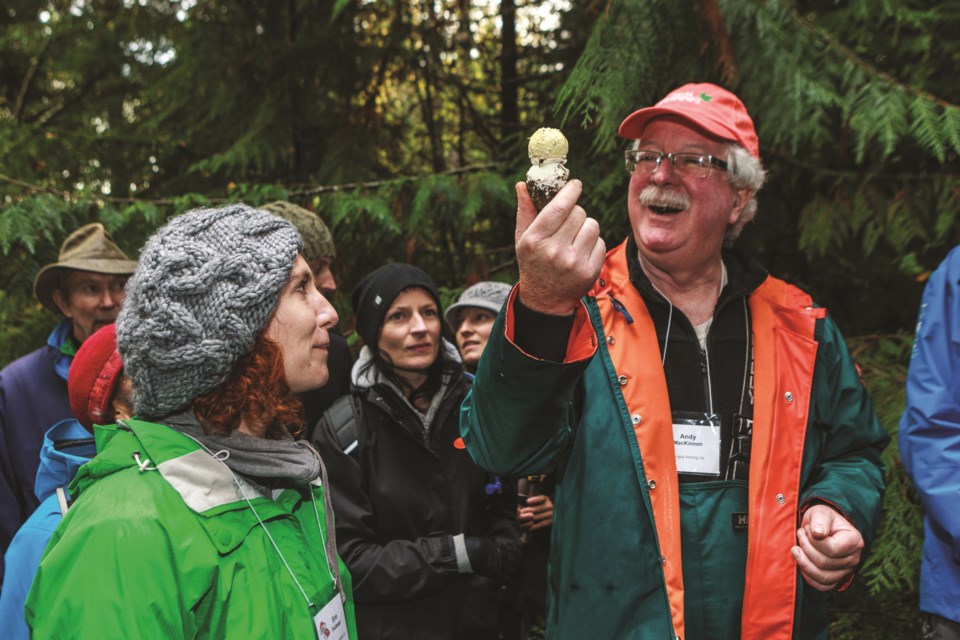Autumn in whistler is mushroom time and therefore an ideal time to welcome Andy MacKinnon and Kem Luther’s new book, Mushrooms of British Columbia (available at Whistler’s Armchair Books). Both authors are long-time Fungus Among Us festival gurus whose enthusiast ability to impart fungal knowledge infuses every page of their new book.
Given my long association with the authors, I’m not an unbiased reviewer of their work—coastal B.C.’s fungal community is so interconnected (insert mycorrhizal pun here) that complete objectivity is hard to find. I’m thus relieved that the merits of this book stand on their own. Mushrooms of British Columbia is a great reference both for keen beginners and afficionados like me whose ignorance about fungi still far outshines their knowledge.
Mushrooms of British Columbia includes 498 handsome, glossy pages packed with fungal facts and excellent photographs. The writing is informative and engaging, especially in the occasional essays that expand on such topics as how to dye with mushrooms, how not to die from mushrooms, psychoactive fungi and, of course, butt rots.
The book starts with a clear, accessible introduction, then presents a key that divides mushrooms by obvious characteristics, for example, veined, gilled, boletes, etc. Almost half the book describes the vast variety of gilled mushrooms and is organized by spore colour, an important and often critical diagnostic feature. Even though the authors encourage readers to take spore prints (with instructions how), they also provide many other identification clues for the spore-resistant. For example, the section that includes pine mushrooms also describes many look-a-likes that could fool you.
Given the incredible diversity of fungal forms in the book (350 main entries, 850 species in all), the keys that guide readers to the appropriate pages are lifelines. The usability of future editions would nonetheless be improved if those keys were duplicated on the inside covers or other more accessible location. In the meantime, I’m making do with bookmarking 27 subsections (which I’d probably do anyway, even if there were keys on the inside covers).
There are a lot of reasons why this new book is my new favourite. The photos are not only beautiful, they also help guide you to the right group of mushrooms to speed potential identifications. It also helps that, unlike in most guides, the overwhelming majority of species occur in Whistler, which means you won’t misidentify your mushroom as something that only grows in, for example, California. And I especially enjoy the comments at the bottom of each page. They’re fascinating, often fun, and (for me) another way to help imprint all the information into my resistant memory.
If you’ve got more than a passing passion for fungi, Mushrooms of British Columbia is a must. Befitting its enormous topic, it’s more a reference book than easy bedside reading. That won’t stop many readers from reading it all in one go and coming back time and again.
Join Kem and Andy for their Zoom presentation as part of this year’s Fungus Among Us event on Oct. 15 at 7 p.m.
The Festival takes place Oct. 15 and 16 with virtual and in-person events. Go here for more information: whistlernaturalists.ca/fungus-among-us-mushroom-festival.
Naturespeak is prepared by the Whistler Naturalists. To learn more about Whistler’s natural world and the upcoming Fungus Among Us Festival, go to whistlernaturalists.ca.



-(1).jpg;w=120;h=80;mode=crop)

